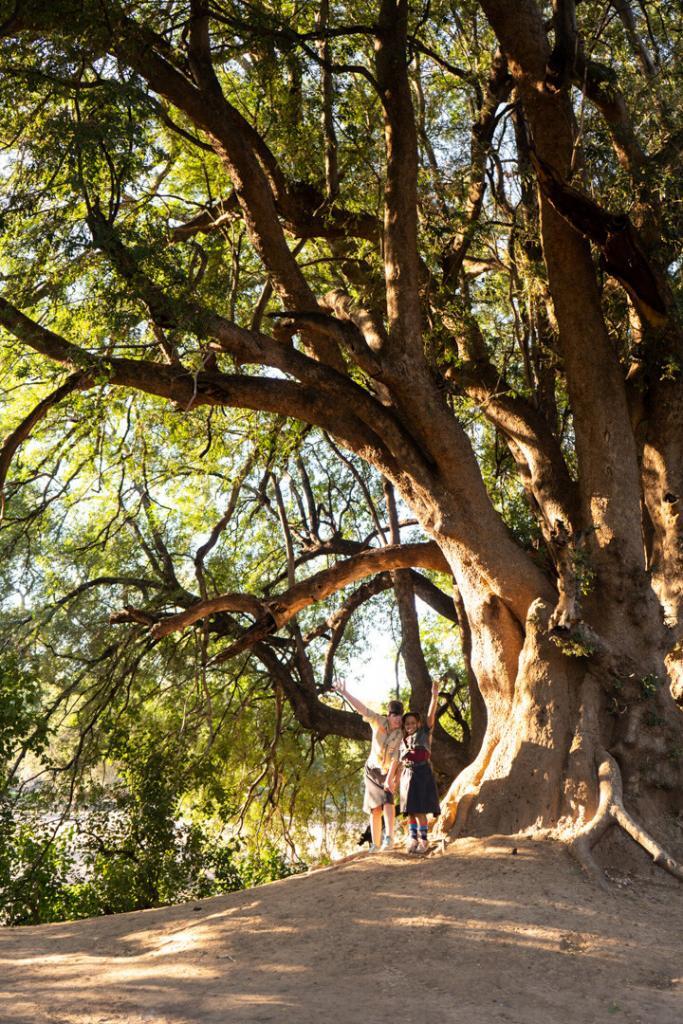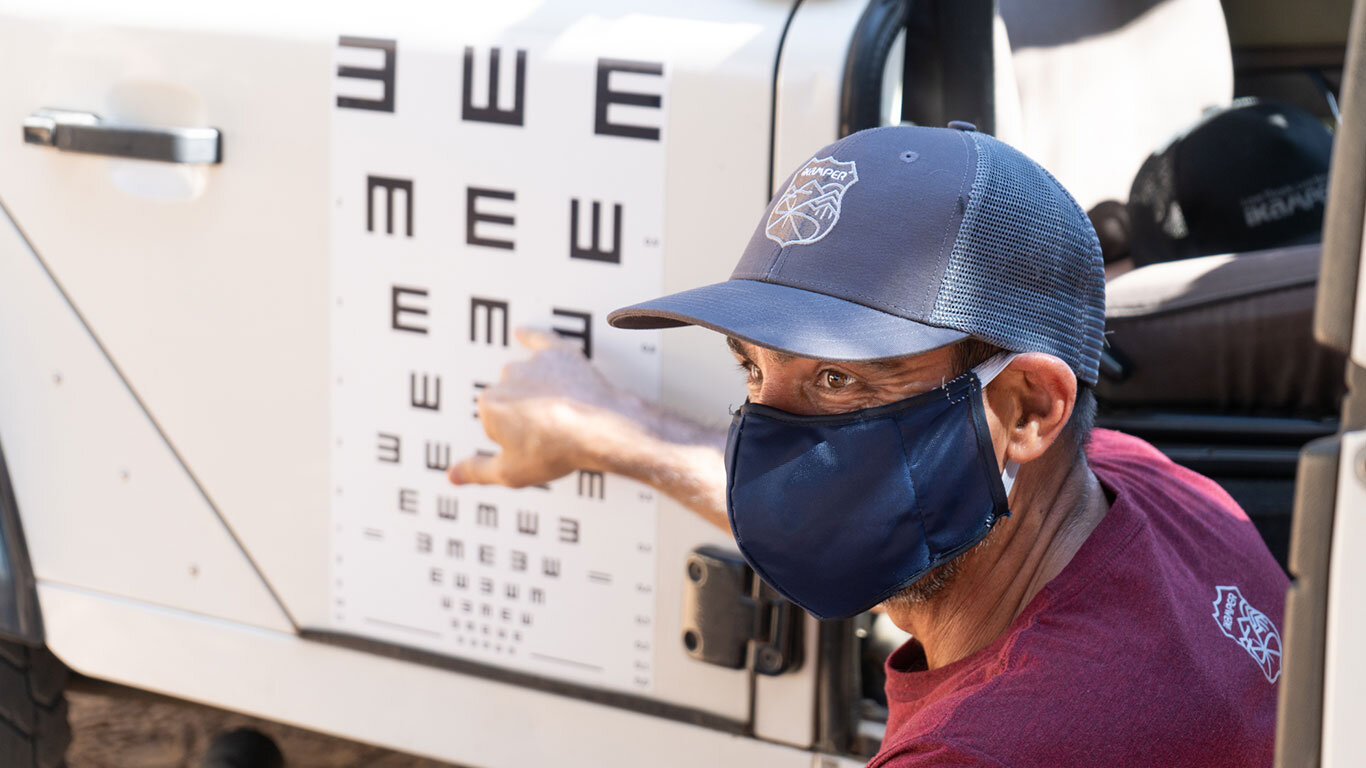According to the WHO, approximately 20 million people in Africa suffer from impaired vision—not including the additional five million or so who are completely blind. Poor vision can have a devastating impact which manifests in many ways, including preventing children from attending school or effecting how families can provide for themselves.
In the developed world, there is about one eye-care professional to every 8,000 people. In the developing world, the relationship is more like one to one million.
Anton Poplett used to be a rescue swimmer for the NSRI, and overlanding has featured in both his private and occupational life for many years. Once he stopped working with the NSRI, he still wanted to put his skills to good use—so he turned his attention to visiting remote communities in Africa and to bring them eyeglasses.
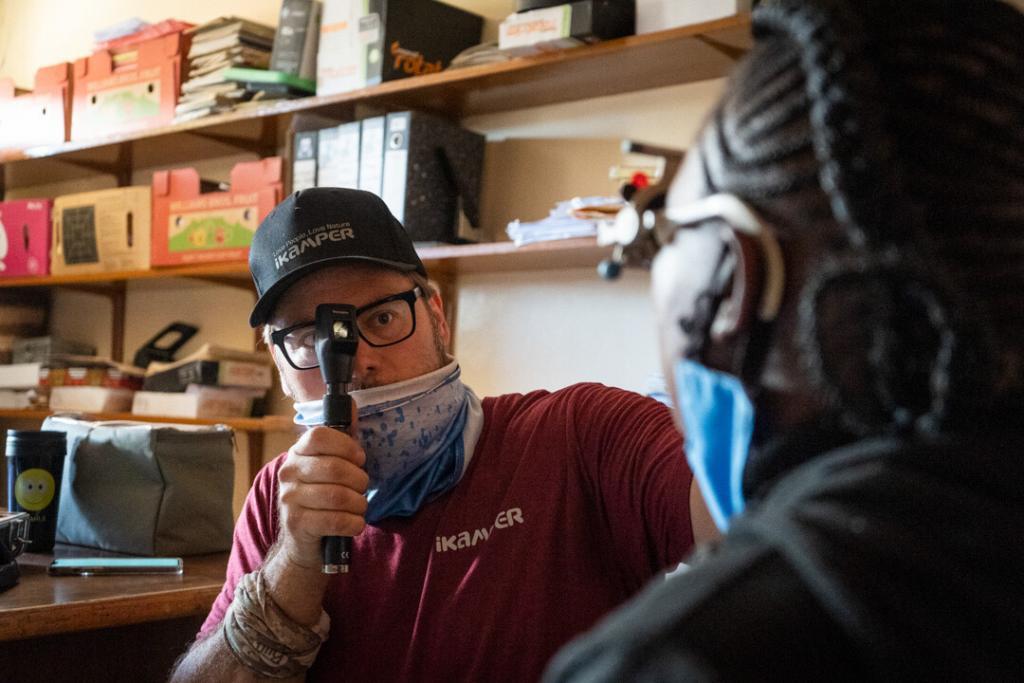
Equipped with the Global Vision 2020’s USee Vision Kit, Anton and his team have the ability to test children, or adults, and provide them with a pair of glasses in a matter of minutes. But not only does Anton help by being on site for a limited amount of time, he also recruits people trusted by their community, teaches them to continue his work once he has departed, and provides them with the necessary equipment and supplies.
The concept of overlanding with a mission is something we can all contribute to—this can be as simple as minimising your environmental impact while travelling, learning a new skill which you can put to good use for others, or by supporting organisations that work to support less fortunate families.
Anton Poplett is just one example of how the overlanding community can help.
DRIVEN TO DELIVER VISION
My Land Rover Defender is not a luxury vehicle for glamorous safaris. I’ve turned it into a travelling eye testing rig, and I’m taking it far off the beaten track.
It was the end of June 2021, and the COVID-19 third wave was spreading like wildfire through South Africa. Lockdown regulations were expected to be tightened, and travel restrictions were imminent.
Despite this, I, the founder of 4x4outfar, was driving my Land Rover Defender 110 up from Cape Town, with all the luggage and equipment for my next overland expedition to Botswana. Joining me on this expedition were eminent optometrist and fellow 4×4 enthusiast Karl Danneberg, his son, cameraman Cam Stuart, and my wife and seven-year-old daughter. In the face of the corona virus, we had a very different epidemic in our sights.
According to the World Health Organization (WHO), more than two billion people have either a near or distance vision impairment. Almost 50 percent of these cases could have been prevented or have never been treated. This makes poor vision the world’s largest unaddressed disability. In the developing world, especially remote areas, there’s almost no access to corrective eye care. Retired United States Marine Kevin White was determined to address this problem. His solution was inexpensive and ingenious.
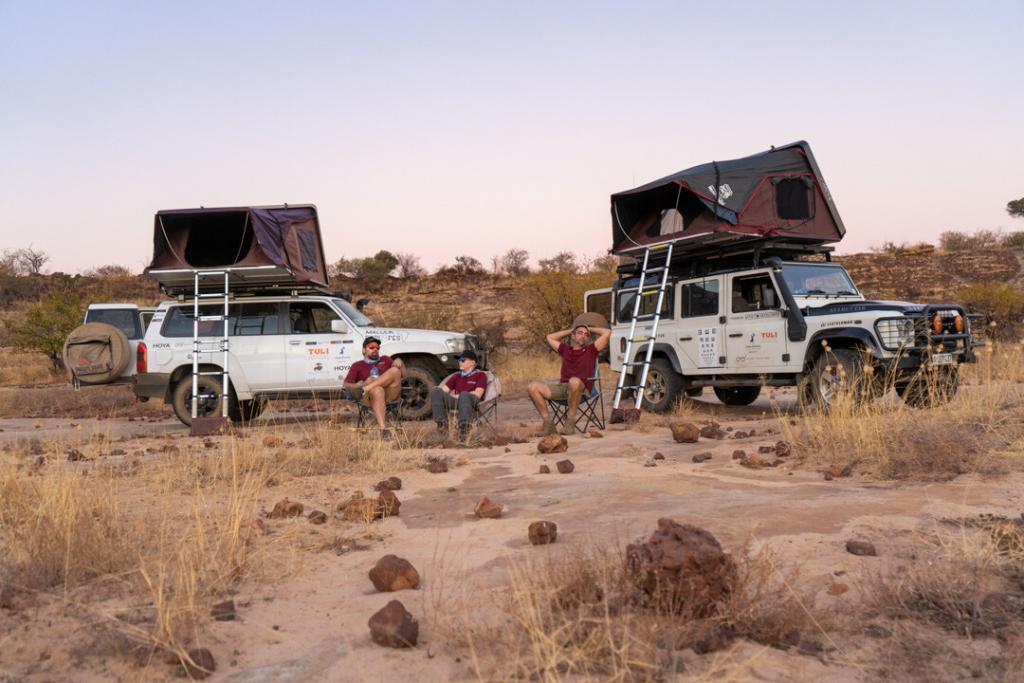
THREE SIMPLE STEPS TO BETTER EYESIGHT
The Global Vision 2020 kit could hardly be simpler. It starts with an easy eye chart test. No need for reading, numeracy, or even a common language, just fingers held in the correct direction: left, right, up, or down.
If poor vision is identified, it’s time for the specially-developed self-diagnostic lens kit. This looks like a strange pair of sunglasses, with large white knobs on either side, and long clear lenses like rulers in front of each eye. The patient turns the knobs to dial the variable power lenses up and down in front of their own eyes until they can see clearly—similar to adjusting a pair of binoculars.
Then, a colour-coded system makes it a matter of moments to select the correct lens for each eye, and snap them into a pair of frames. In this way, a pair of custom prescription glasses can be provided in around five minutes, and for less than five dollars per person.
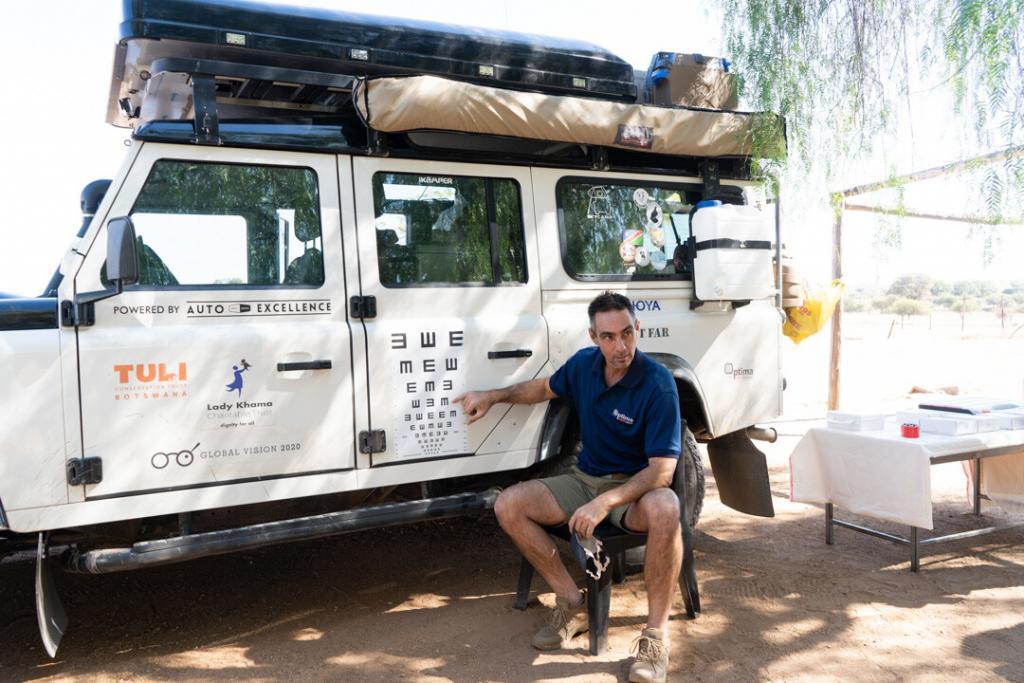
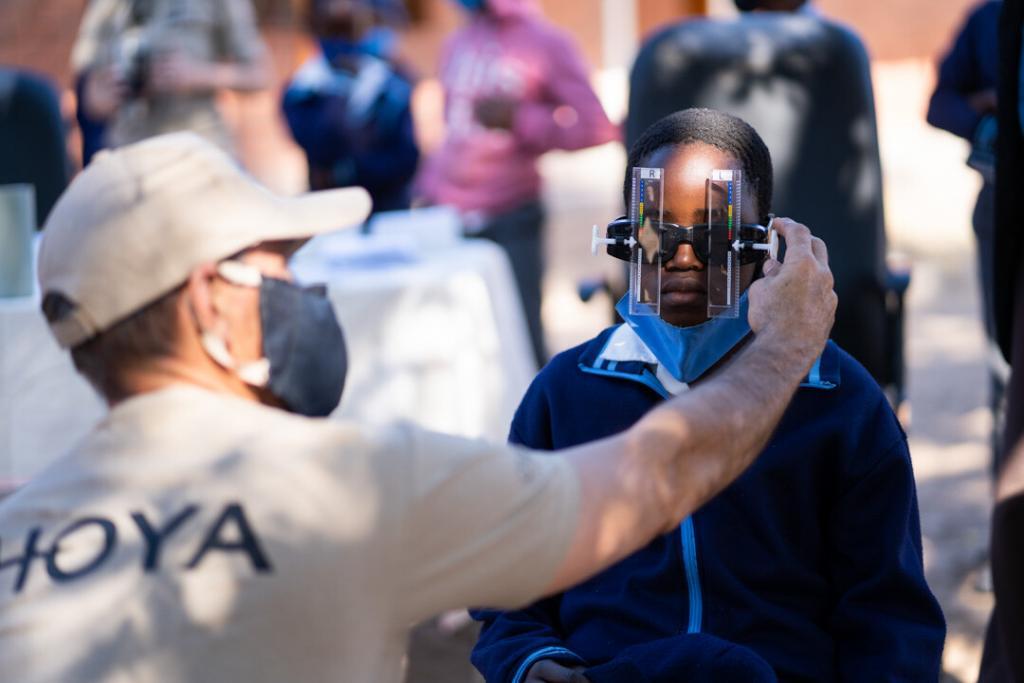
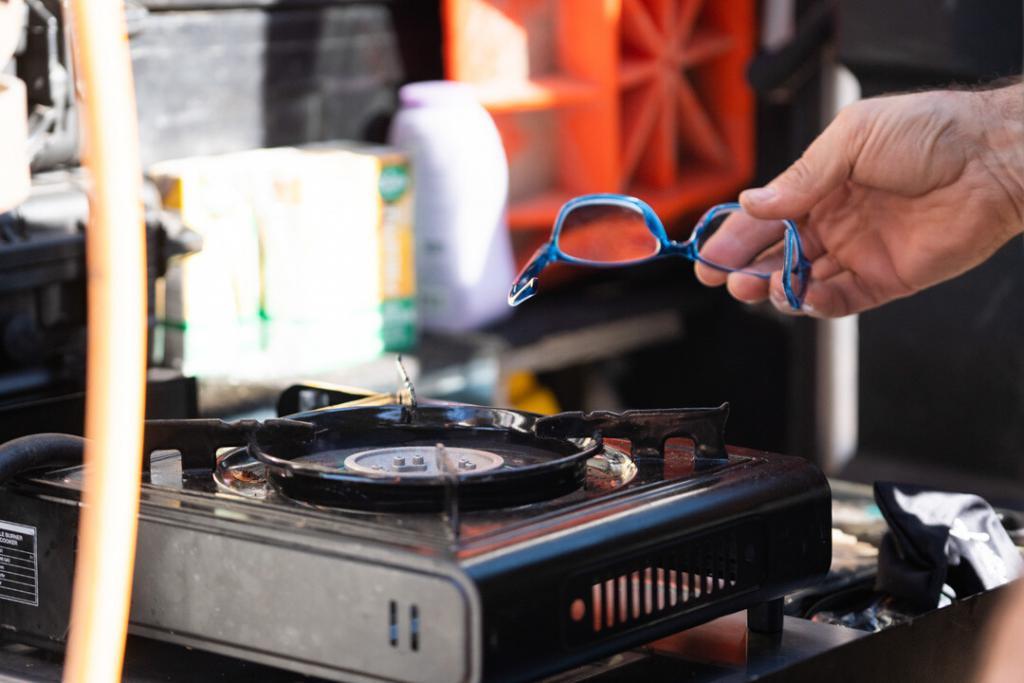
While Global Vision 2020 manufactures the kits, and provides the training to use them, humanitarian faith-based organisations, NGOs and individuals partner with them to deliver the prescription eyeglasses. I step up and run the Africa operations to show how it’s done. After all, what better way could there be for overlanding enthusiasts to put their passion for adventure—as well as their gear—to good use?
ELEPHANTS CROSSING
The Bobirwa Eye Project had been two years in the planning, and would be another deep rural mission in Botswana using the Global Vision kit. Previously, my team and I had visited schools in the Okavango Delta district, screening 4,300 kids and implementing hundreds of pairs of eyeglasses. This time, I had planned to do a circuit around six primary schools in the wild (lesser known) Tuli Block region in Bobirwa—a place where the only traffic jams are of the wildlife kind, and elephants are considered a routine roadblock.
There are few to no tourist facilities in that area, so we camped at the schools, teachers’ houses or in rough campsites in the middle of the bush. Again, places where elephants, lions, hyenas and leopards can be expected. This, along with the combination of bad roads and sketchy cell phone reception, meant that preparation and proper gear were vital, and I spent most of my waking hours for three weeks putting everything systematically into my Defender.
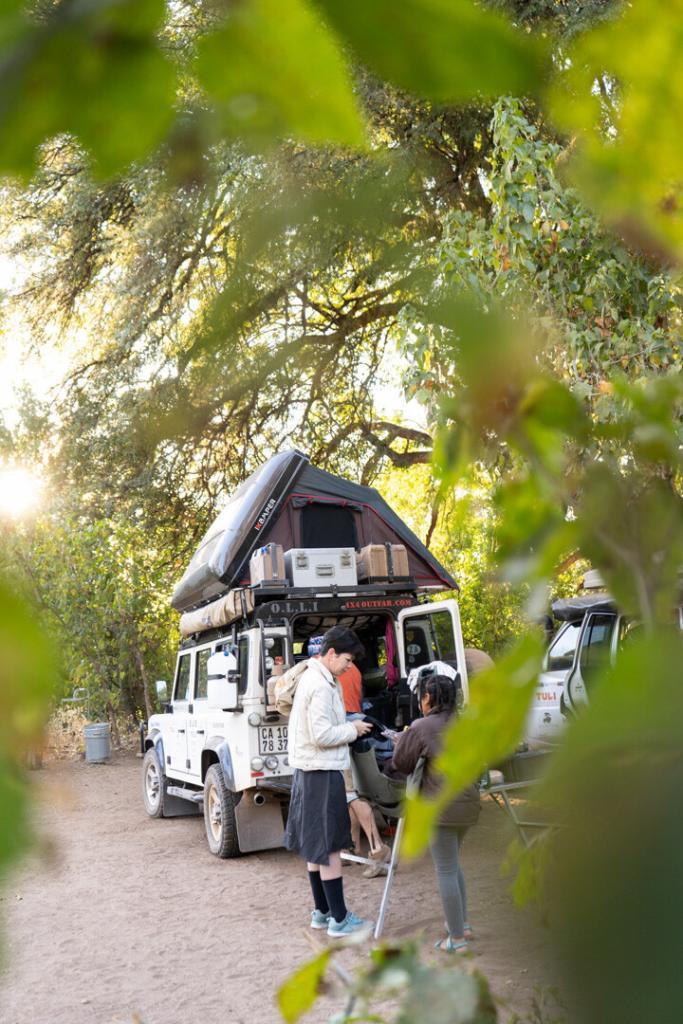
The expedition got off to a smooth start as the team crossed the border under sunny skies. The first test of our skills came as the sun vanished while we were still negotiating narrow roads through the middle of the bush, on the way to our first camp on the banks of the Limpopo River. Fortunately, I had installed a new set of Vision X ADV2 lights on my Land Rover Defender, which gave me the confidence to continue through the utterly unknown terrain of long grass, Baobabs and tall Mashatu trees. For my wife and daughter, it was a thrilling and late introduction to the expedition.
LEAVE NO CHILD UNTESTED
After a weekend of preparing and checking out the river, the project started with the usual chaos of the team finding its rhythm, but we soon had an efficient system worked out. With more than 2,000 children to screen in five days (one of which was a public holiday), everyone on the expedition took part in the process, so that none of the children were left unscreened. Everything was done with strict adherence to health protocols of sanitising, mask-wearing, temperature checks, and social distancing.
Although several adults, including teachers, were given eyeglasses, the project was focused on screening children between 10 and 14 years of age, a critical period when the eye is coming into its middle stage of development. At each school, we were joined by Children In The Wilderness (CITW) Eco Mentors (two of which were trained to use the kit after we had left), all of whom are local teachers, caregivers or parents. Since many of the younger children were apprehensive about the tests, it was reassuring for them to have someone familiar explain what these strangers were doing.
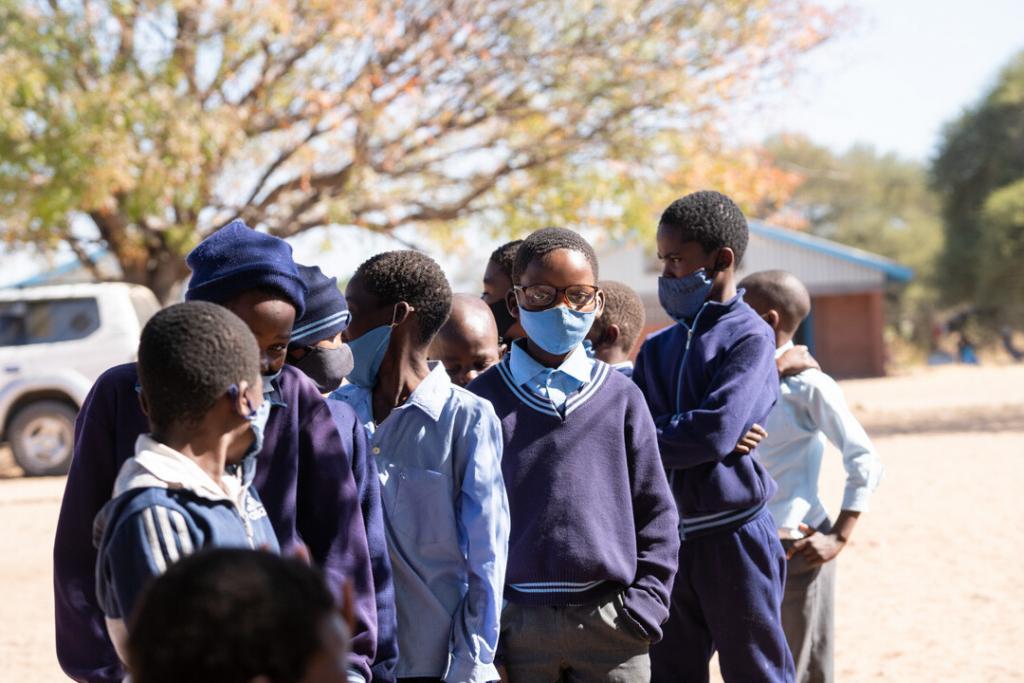
Our thoroughness and attention to detail uncovered an undiagnosed phenomenon in ten of the children. Noticing this anomaly, Karl performed more thorough eye exams, which led him to suspect a sight-threatening condition called Keratoconus, a progressive thinning of the cornea. Once his diagnosis is confirmed, the team will follow up with a suggested course of action.
DUST AND DUNG, NOT DISNEY
To reach the schools, Karl and I relied heavily on our 4×4 overlanding skills and equipment. The dirt roads were rough, with corrugations, deep dongas, and divergent routes with some sharp bends to tackle. Sometimes it would take more than an hour and a half of driving in second gear to cover a distance of just 30 kilometres. We frequently saw Bobanong’s lone ambulance going in different directions—a reminder of the scarcity of healthcare services in this wild area. There was little other traffic and only two “traffic jams”—one, when we had to wait for a herd of elephants crossing, and another, when two giraffes were somewhat inconveniently having a fight right in the middle of the road.
The days were as long and busy as the roads were long and dusty. Wildlife encounters aside, humanitarian work in Africa is anything but a Disney movie. There is often conflict between elephants and humans, so vigilance is vitally important. But my family and I found joy in unexpected places. For my wife, it was the beautiful combination of Buchu bush smells, dung, and dust that hung in the air at dusk. For my daughter, it was endless helpings of delicious mealie pap [local maize dish], and the intriguing variety of stones, bones, and poo offered up by the African bush, some of which returned home with her. And for me, it was a chance encounter with a little girl that still brings a lump to my throat and the glimmer of tears to my brown eyes when I think of the story:
THAT, TO ME, IS GOLD. THAT’S EXACTLY WHY I DO THIS
We hadn’t had any reception whatsoever for the last three days, and we found out earlier in the week that the return flights were cancelled following the new lockdown restrictions. So, I went back to the first school we visited, Lentswele Moriti Primary. There’s a tree there, and if you go and stand right underneath it, you can get signal.
While I was there, I asked the teacher a few questions, and she brought me one of the young girls who had received glasses from us a few days before. The little girl was very shy about her English, but she told me that before, she could never sit in class and do the work like the other children, she could only listen. Now, with her glasses, she can see clearly. Her uncle also told the teacher that he’s noticed a great improvement in her eyesight, and that she’s even started to take an interest in her homework for the first time. That, to me, is gold. That’s exactly why I do this.

EDITOR’S NOTE Anton’s next 4x4outfar expedition is planned for the Hwange district in Zimbabwe. To find out more, follow him on Instagram: @4x4outfar
This article first appeared in the 2021 Summer edition of Overland Journal.
Photography: Anton Poplet
